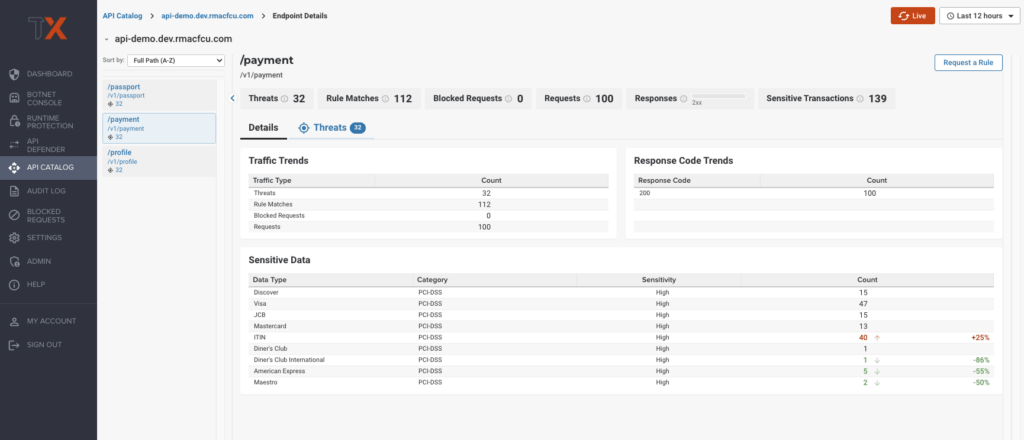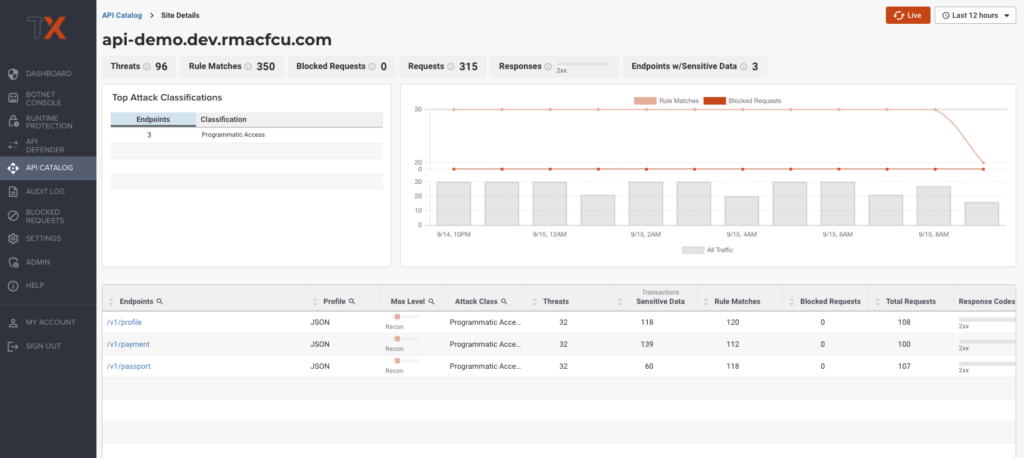LAST UPDATED Sep 20, 2023
Why Identifying Sensitive Data in APIs Is Critical for PCI DSS and GDPR Compliance
Data leaks are a significant concern for organizations of every size in every industry. Beyond the reputational damage organizations suffer after a leak, there are the significant fines or penalties from non-compliance with privacy regulations, which have recently been as high as $1.19 billion.
Complying with these regulations and avoiding the fines starts with identifying where and how you are using sensitive data.
This identification is crucial for compliance with two of the biggest regulations, Payment Card Industry Data Security Standard (PCI DSS) and the General Data Protection Regulation (GDPR).
PCI DSS
PCI DSS primarily focuses on the protection of payment card data, including credit card numbers and related information. Identifying sensitive data in the context of PCI DSS means locating and safeguarding cardholder data (CHD).
The key points to consider are:
Scope of cardholder data: PCI DSS mandates that organizations identify and limit the scope of CHD within their environment. This involves understanding where this data resides, how it is transmitted, and how it is processed. Identification includes recognizing the different forms of CHD, such as primary account numbers (PANs), expiration dates, and cardholder names.
Data flow: Understanding the flow of CHD through an organization’s systems and networks is crucial. Organizations must document data flows to pinpoint where sensitive data is collected, transmitted, stored, or processed.
Data classification: PCI DSS requires classifying data into sensitive and non-sensitive categories. This helps in focusing security measures on protecting the most critical data.
Access control: Controlling access to CHD is another essential aspect. Organizations should implement strict access controls to ensure that only authorized personnel can access and handle sensitive cardholder data.
Encryption: PCI DSS mandates encryption for sensitive data in transit and at rest. Identifying where CHD is stored and transmitted helps in applying encryption where required.
GDPR (General Data Protection Regulation)
GDPR is a comprehensive data protection regulation that applies to the personal data of European Union (EU) citizens. While it covers a broader range of sensitive data than PCI DSS, the principles of identifying and protecting this data overlap in several ways.
Data mapping: GDPR requires organizations to maintain records of processing activities. Identifying sensitive personal data and understanding how it is processed is a fundamental step in GDPR compliance.
Data minimization: Both GDPR and PCI DSS emphasize the principle of data minimization. Organizations should only collect and retain the data that is necessary for the purpose for which it was collected. Identifying sensitive personal data helps in ensuring that unnecessary data is not collected or retained.
Consent and transparency: GDPR requires obtaining clear and informed consent from data subjects when processing their sensitive personal data. Identifying such data is crucial for ensuring that proper consent mechanisms are in place.
Security measures: GDPR mandates the implementation of appropriate security measures to protect personal data. Identifying sensitive data helps in determining what security controls are necessary to protect this data from breaches.
Organizations need to take a comprehensive approach to data identification and protection to ensure compliance with both regulations, especially when processing both payment card data and personal data.
How ThreatX Can Help Organizations Identify Sensitive Data
ThreatX Sensitive Data Exposure Detection helps customers automatically detect the presence of sensitive data exposed within their API transactions.
ThreatX’s sensitive data exposure capabilities detect and visualize APIs that are most at risk of being targeted in an attack due to the sensitive data they contain. This helps organizations adhere to privacy regulations like PCI DSS and GDPR by identifying and monitoring API traffic containing personal information, payment card data, and authentication information that would expose the risk of unauthorized access to systems.

By proactively identifying and alerting on sensitive data exposure, we help our customers:
- Mitigate data breaches
- Ensure compliance with privacy regulations, like PCI-DSS and GDPR
- Strengthen the security posture of APIs

Watch a quick tour of ThreatX sensitive data exposure detection.
